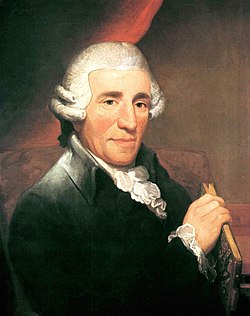| Violin Concerto No. 4 | |
|---|---|
| by Joseph Haydn | |
 Joseph Haydn in 1791; portrait by Thomas Hardy | |
| Key | G major |
| Catalogue | Hob. VIIa/4 |
| Movements | 3 |
The Violin Concerto No. 4 in G major (Hob. VIIa/4) by Joseph Haydn is one of the composer's three surviving violin concertos. [1]
